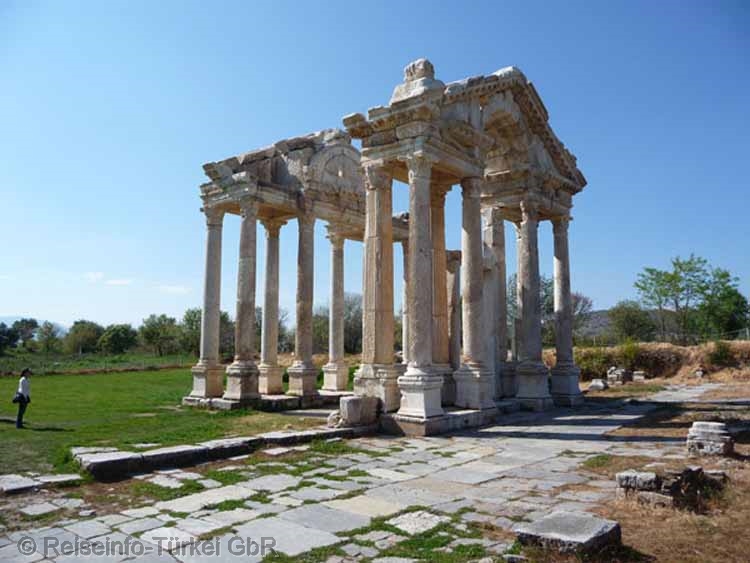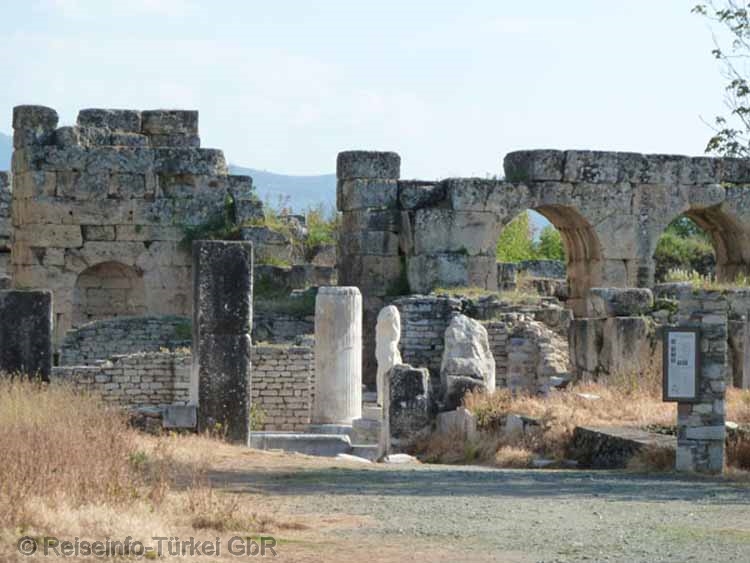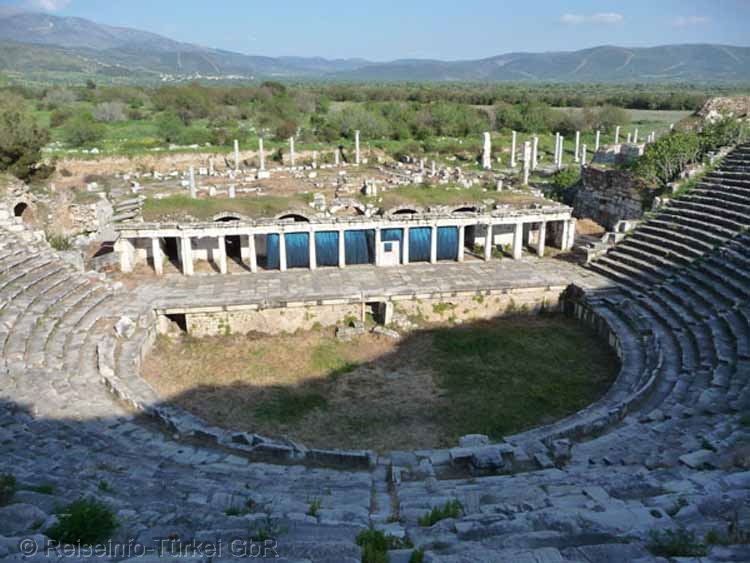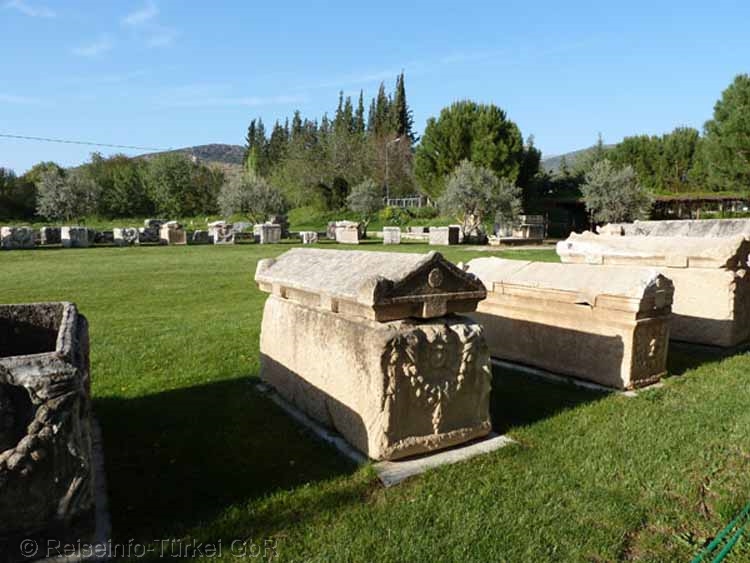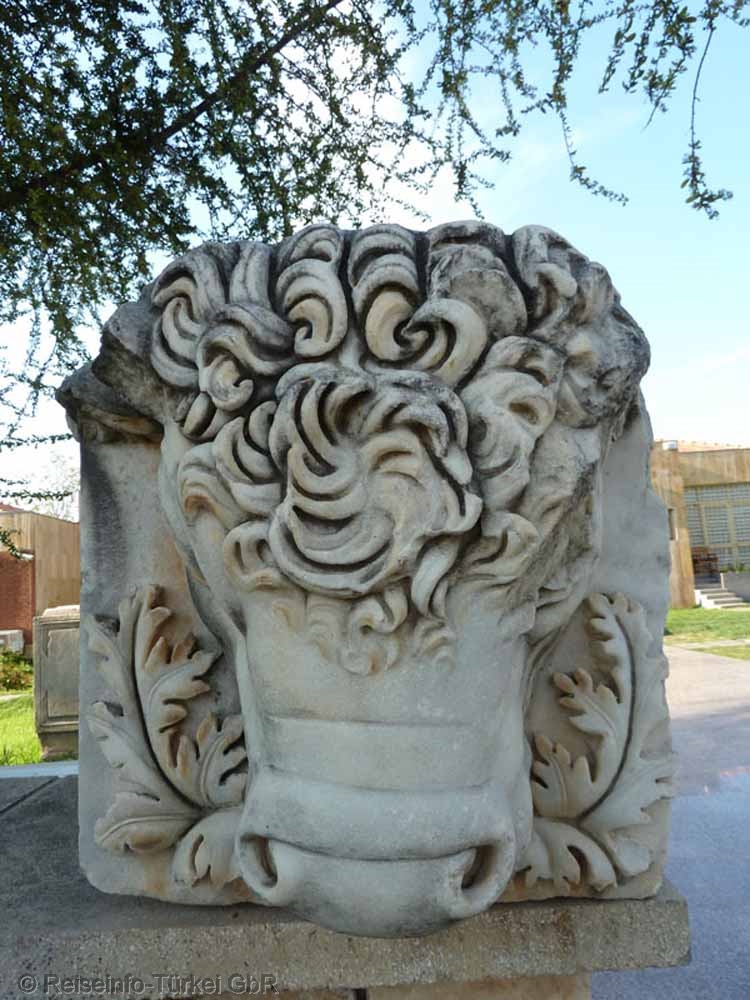|
Interesting places in Turkey |
|||
| City in ancient Caria |
|
||
| Aphrodisias | |||
| City of Aphrodite | |||
|
|
|||
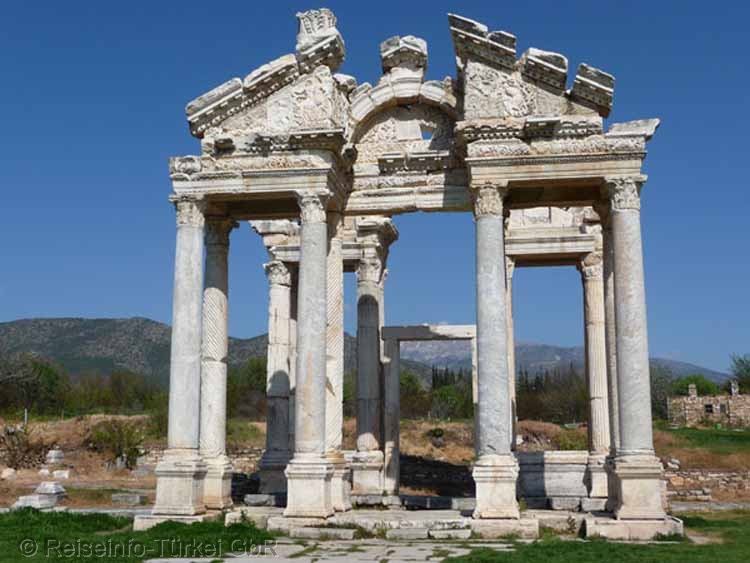 |
|
||
| The Tetraphylon | |||
|
|
|||
|
The name Aphrodisias is derived from the cult of Aphrodite, which was practiced in the central temple of Aphrodite. |
|||
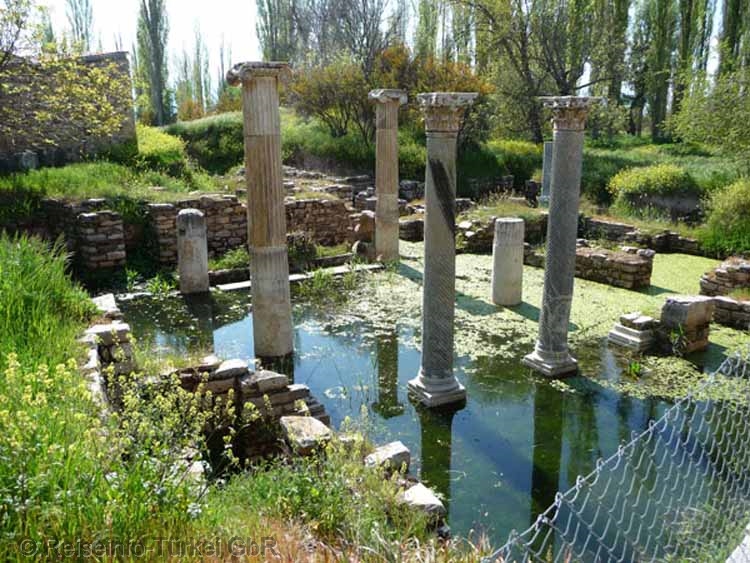 |
|||
| Perystil house on the way to the Tetraphylon | |||
|
The origins of the city can be traced back to the 3rd millennium BC. However, it only received its name in the Hellenistic period in the 3rd century BC. Earlier names were Lelegonopolis, Megalopolis and Ninoe. In Hellenism, Aphrodisias also entered into a connection with the neighbouring Plarasa. This happened by minting common coins. |
|||
|
|
|||
| The Tetraphylon | |||
|
|
|||
|
A tetrapylon was often erected in the centre of cities during the Roman Empire as an accentuation of street crossings. A tetrapylon was usually planned as a gate building or monument of honour, rarely also as a sign of victory. |
|||
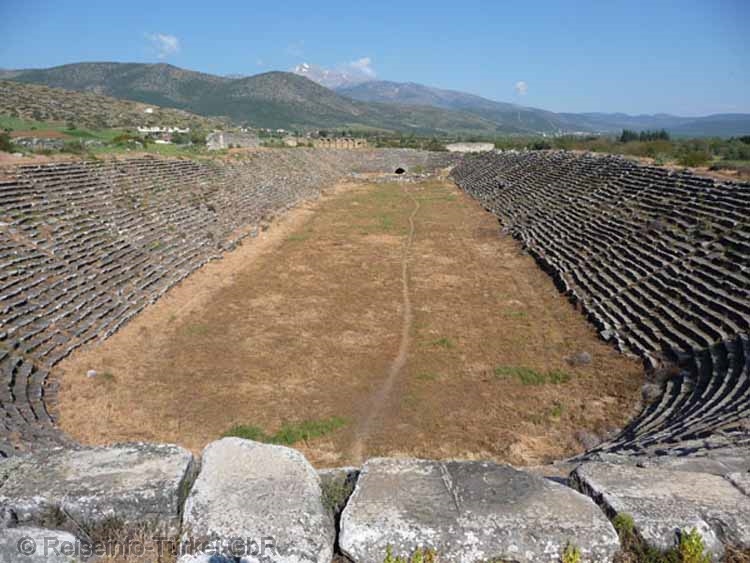 |
|||
| The stadium of Aphrodisias | |||
|
|
|||
|
The Stadium of Aphrodisias is considered the best preserved stadium in the Mediterranean. With a length of 262 metres, a width of 59 metres and a capacity of 30,000 spectators on 22 rows of seats, it is also one of the largest of its kind. |
|||
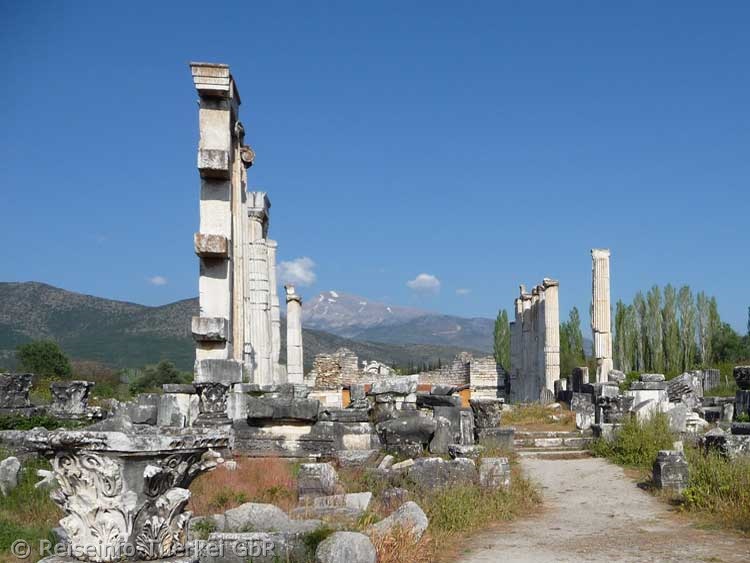 |
|||
| The temple of Aphrodite | |||
|
|
|||
|
The remains of the temple of Aphrodite still visible today date back to the 1st century B.C. (although a temple of Aphrodite existed earlier). Under Augustus and Hadrian the temple was further extended and rebuilt. In the 5th century it was converted into a church. In Greek mythology, Aphrodite is the goddess of love, beauty and sensual desire. Originally responsible for growing and developing, she only later became the goddess of love. The counterpart in Roman mythology is Venus. |
|||
|
|
|||
| The Hadrians baths | |||
|
|
|||
|
During the Roman civil wars of the 1st century B.C. the city was able to maintain a good relationship with the respective rulers. Thus the three emperors Antonius, Octavian and Lepidus, in a decree of 39 B.C., which is handed down in writing, assured the city freedom (from the Roman provincial administration), immunity from Roman taxes and the right of asylum. Further inscriptions provide information about the relationship of Aphrodisias to Rome. |
|||
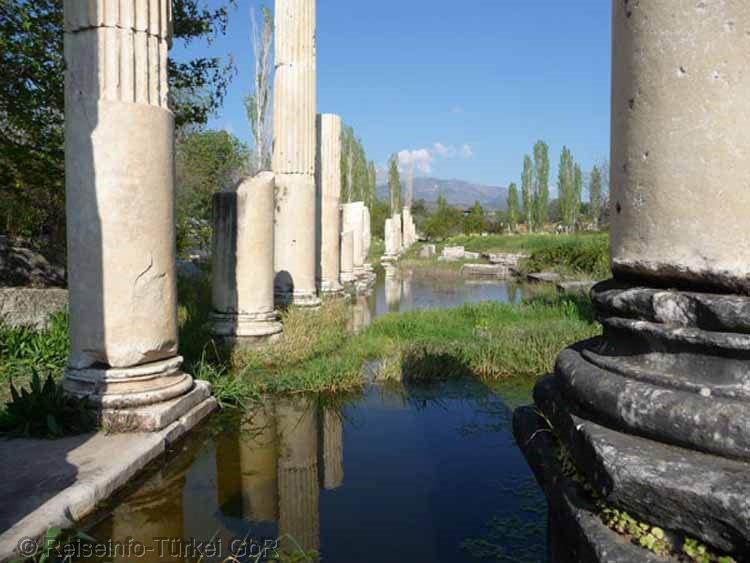 |
|||
| Columns at the edge of the Agora | |||
|
|
|||
| The Theatre | |||
|
The (Greek) theatre of Aphrodisias was built in the 1st century BC and was probably consecrated in 35 BC. It nestles on the western slope of the Acropolis hill. The theatre was rebuilt several times in Roman times. The present state corresponds to the extension of the 2nd to 3rd century AD. The orchestra was deepened under Marcus Aurelius (Roman emperor from 161-180 AD) and rebuilt for gladiator and animal fights. For cleaning purposes the orchestra could be flooded. Under his predecessor, Antoninus Pius (138-161 AD), the summa cavea, the upper audience tiers, was extended for the lower classes. The theatre was opened up in the 1970s by New York University. |
|||
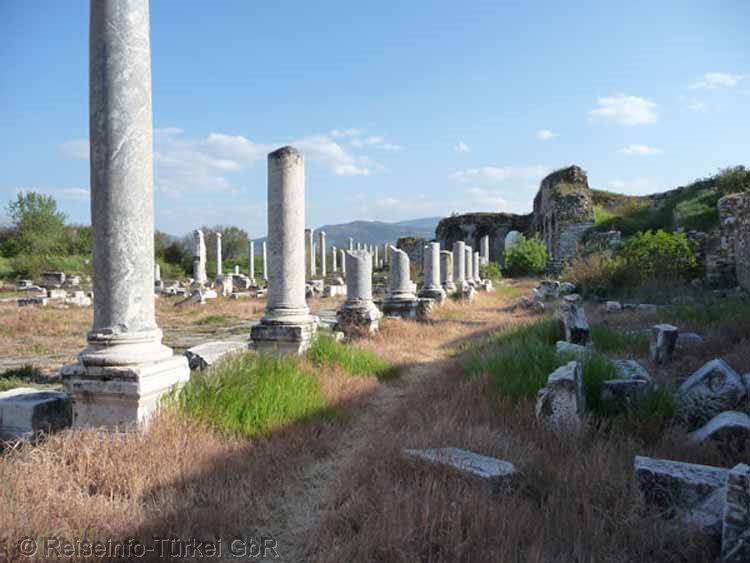 |
|||
| The agora at the theatre and the theatre thermal baths | |||
|
|
|||
| Sarcophagi on the museum grounds | |||
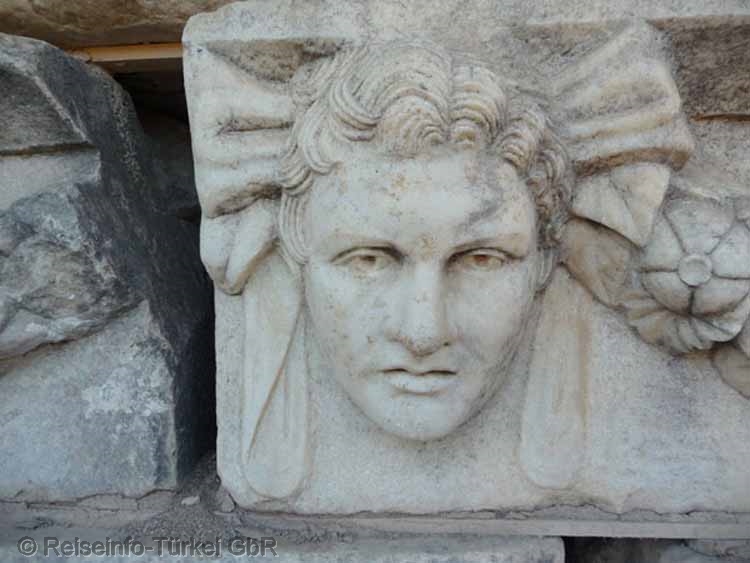 |
|||
|
Part of a frieze |
|||
|
Favoured by the nearby quarries, an extensive marble industry and a famous school of sculptors flourished in Aphrodisias. |
|||
|
|
|||
|
You can reach Aphrodisias via the national road D585. Coming from the north (Izmir, Kusadasι, Selçuk), the fastest way to reach Aphrodisias is to take the highway to Aydιn, then continue on the D320, direction Denιzlι. 4 km after the village of Kuyucak, the road to Karacasu and Aphrodisias branches off to the right, which will take you directly to Aphrodisias after about 38 km. Coming from Marmaris, first take the national road D550 to Muğla, then the D330 towards Denιzlι. At the entrance to Tavas, the signposted road to Karacasu branches off to the left. After about 35 km you will reach Aphrodisias Coming from Antalya you drive on the D350 via Korkuteli to Söğüt. There you turn right onto the D585 / E87, direction Denιzlι. After approx. 95 km turn left on the D330, direction Muğla / Tavas. At the end of Tavas the road to Karacasu turns right. After approx. 35 km you have reached Aphrodisias. |
|||
